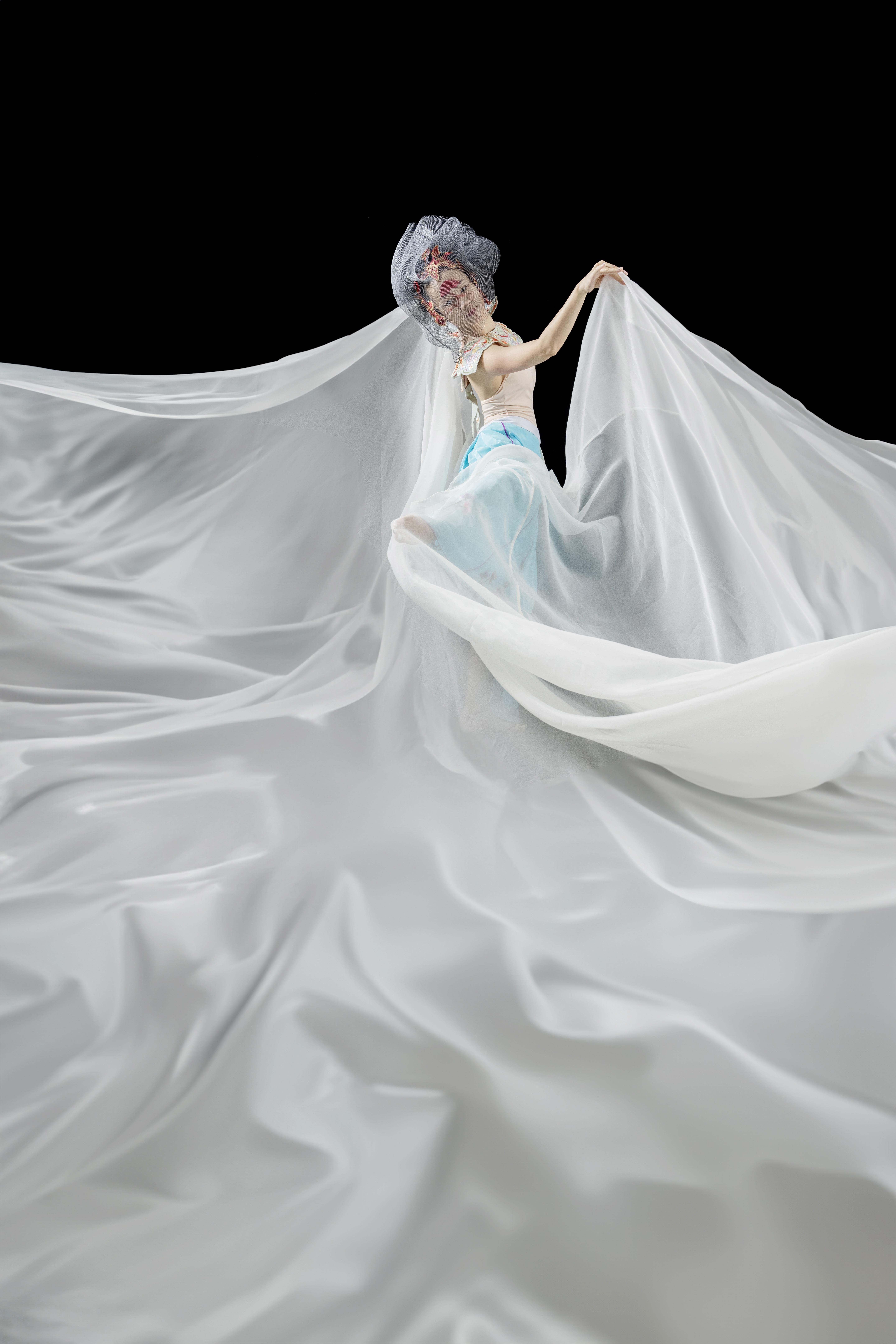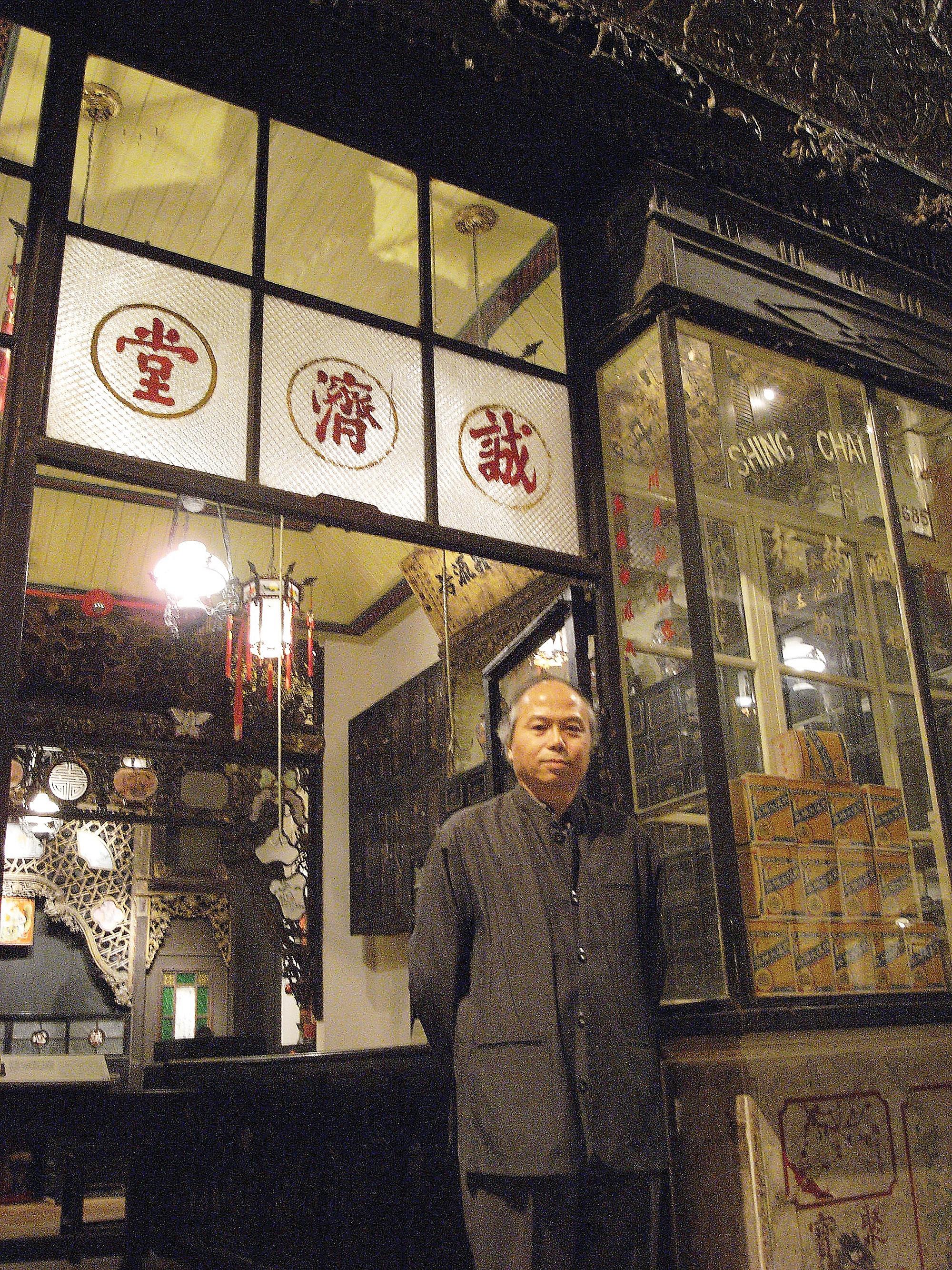The Hong Kong Dance Federation is showcasing new works based on indigenous elements of Chinese culture, the highlight being Turbulent Waves, a displacement-themed piece that fuses the traditional with the contemporary. Chitralekha Basu reports.
 At the center of the dance drama is a tribal chieftain, played by Yang Hao (in red), leading his clan across a rough sea, on a journey by boat from Chaozhou to Hong Kong. He is seen here with his son Chaoer, played by Chan Ying-hei, who nearly drowns in the choppy waters. (PHOTO PROVIDED TO CHINA DAILY)
At the center of the dance drama is a tribal chieftain, played by Yang Hao (in red), leading his clan across a rough sea, on a journey by boat from Chaozhou to Hong Kong. He is seen here with his son Chaoer, played by Chan Ying-hei, who nearly drowns in the choppy waters. (PHOTO PROVIDED TO CHINA DAILY)
This month, the Hong Kong Dance Federation is hosting a symposium, workshops, and a dance expo featuring performances by more than 40 companies from all across China as part of its program titled The Chinese Culture and Dance Festival. All eyes are on Turbulent Waves, an HKDF-produced dance drama premiering at the Hong Kong Cultural Centre on Aug 19. The piece celebrates two items on Hong Kong’s intangible cultural heritage list: Yingge (heroic) dance, a tradition that was brought to the city by the migrants from Chaozhou in Guangdong province; and the worship of the Tin Hau goddess — the deity presiding over sea voyages.
The dance drama promises to be a spectacle that will hopefully enhance our understanding of migrants and the migrations taking place in the world today. As playwright Gerard Tsang points out, in Turbulent Waves the character of Tin Hau represents “an inclusive symbol of oceanic culture and her mercy extends to all”.
“She could be seen as a source of harmony for all immigrants crossing the seas,” he adds.
 Chau Yat plays a younger, carefree and playful version of Chaoer, appearing in a flashback that shows him basking in the delights of a calmer and more gentle nature. (PHOTO PROVIDED TO CHINA DAILY)
Chau Yat plays a younger, carefree and playful version of Chaoer, appearing in a flashback that shows him basking in the delights of a calmer and more gentle nature. (PHOTO PROVIDED TO CHINA DAILY)
He Yongning essays the role of Tin Hau. She’s enjoying playing a benevolent agent of change who always “responds immediately” when invoked by those who find themselves in the deep end.
“Wasting no time trying to put on her formal queen’s dress, she descends on the top of the main mast, dressed in a red robe with her hair loose,” is how He describes her character. Her personal favorite is the scene in which she is shown “playing with the turbulent waves to calm them” before “pulling the ship to safety”.
Turbulent Waves tells the story of a tribal chieftain, leading his clan on a journey by boat from Chaozhou to Hong Kong, across a rough sea. Accompanying him is his son Chaoer, who nearly drowns in the choppy waters. Chaoer also appears as a child (played by Chau Yat) in a flashback sequence, bringing back memories of a time when nature was more friendly and life used to be full of earthly delights.
 He Yongning plays Tin Hau, the deity presiding over sea voyages, in the Hong Kong Dance Federation-produced Turbulent Waves. (PHOTO PROVIDED TO CHINA DAILY)
He Yongning plays Tin Hau, the deity presiding over sea voyages, in the Hong Kong Dance Federation-produced Turbulent Waves. (PHOTO PROVIDED TO CHINA DAILY)
Director and choreographer Chen Lei explains the logic behind including a child performer in a mix of seasoned, adult dancers. A migration story involves families, including both the young and old, he says. Besides, “child dancers add life and affection to the drama”.
The dancers wear no-frills, functional costumes paired with elaborate headpieces and Peking Opera-style masks painted on their faces. Image and costume designer Bacchus Lee explains that the exaggerated theatricality of the headgears and facial makeup are meant to reference the distinctive Yingge get-up, “embodying the contours of traditional Chinese clothing”.
 Gerard Tsang, who wrote the dance drama Turbulent Waves, says the character of Tin Hau represents “an inclusive symbol of oceanic culture”. (PHOTO PROVIDED TO CHINA DAILY)
Gerard Tsang, who wrote the dance drama Turbulent Waves, says the character of Tin Hau represents “an inclusive symbol of oceanic culture”. (PHOTO PROVIDED TO CHINA DAILY)
Tin Hau’s makeup has been kept relatively simple. She has only patterns in red painted on her forehead.
“The color red is associated with both the Chinese opera and Chinese mythological characters, and frequently appears in Chinese festive celebrations and auspicious ceremonies,” Lee points out. “Also, red is a color Chinese people associate with the image of the divine.” However, both the makeup and headpiece for the goddess are designed “in a very modern style”, he hastens to add.
Indeed, traditional Chinese culture and modern sensibilities sit side by side in Turbulent Waves.
“Our team of professionals ensures that the costumes and make-up as well as visual effects are contemporary,” Chen says.
 Chen Lei, director-choreographer of the dance drama, contends that the production looks both Chinese and contemporary, thus resonating with a distinctly Hong Kong ethos. (PHOTO PROVIDED TO CHINA DAILY)
Chen Lei, director-choreographer of the dance drama, contends that the production looks both Chinese and contemporary, thus resonating with a distinctly Hong Kong ethos. (PHOTO PROVIDED TO CHINA DAILY)
He goes on to add that Yang Hao, who performs as the male lead, has ventured outside his comfort zone with Turbulent Waves, having trained in contemporary dance at the Hong Kong Academy for Performing Arts; and that the music for the piece “is composed using Chinese instruments with digital sound effects added”.
“The production satisfies two requirements: It looks both Chinese and contemporary, thus reflecting a Hong Kong character,” he adds.
If you go
Turbulent Waves
Directed and choreographed by Chen Lei. Presented by the Hong Kong Dance Federation.
Dates: Aug 19-20
Venue: Grand Theatre, Hong Kong Cultural Centre, 10 Salisbury Avenue, Tsim Sha Tsui
Contact the writer at basu@chinadailyhk.com



